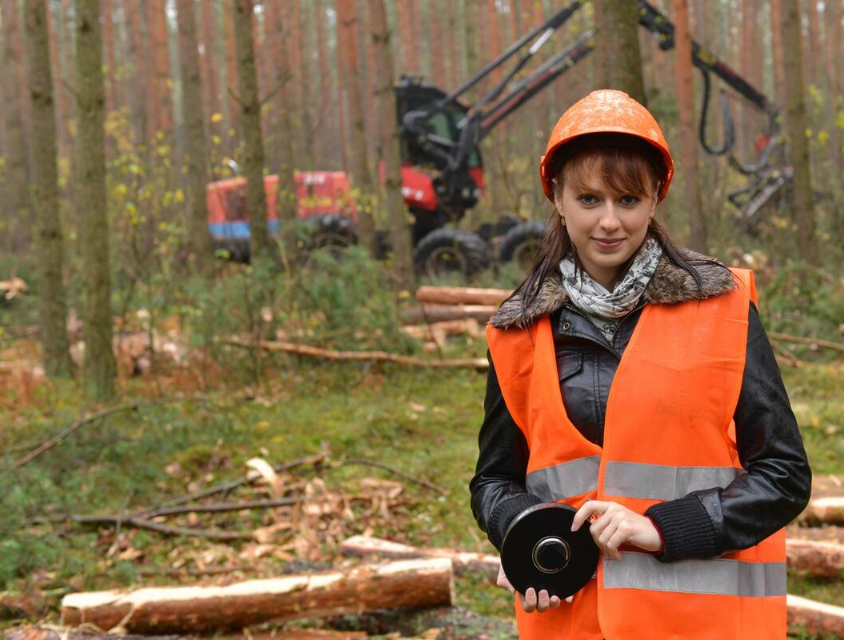Storms, frost, and abrupt temperature changes wreak havoc on trees throughout the winter months. Even for animals adapted to colder climates, winter is a difficult period. This is particularly true for residential trees that are exposed and isolated, and some stress is inevitable. However, there are measures that may be taken to reduce the effects of winter stress. You can reach out to Tree Service Bay Area for professional help.
Cold Stress
There are many different types of cold stress. Rapid temperature changes between day and night cause tension between the exterior and interior wood, which may result in fractures. Frost cracking or southwest damage refers to the cracks that appear on the side of the tree that receives the most sunshine, the southwest side.
There isn’t much that can be done to avoid frost cracking. Though the broken region remains susceptible, the tree may often heal itself. Additionally, several cracks in the same location may result in significant damage. As part of a fall care program, young trees, palms, and other tropical plants may benefit from bark wrapping.
Another significant cold stress is a rapid early front on late growth. Because it hasn’t had as much established growth to adapt to the cold, late-season tree growth is susceptible. When ice crystals develop and die off in the next season, the cell walls on the new tips of branches often break.
If you wait until the tree has gone dormant in the autumn to prune, you may avoid this problem. Pruning too early promotes new growth while also increasing the danger of frost damage. Furthermore, stay away from fertilizers that contain a lot of nitrogen that releases quickly.
Winter Drought
Droughts are a concern for trees, particularly evergreens, throughout the winter. A tree dries out when it loses more water from the frozen ground than it can absorb. It’s especially important in the early spring when the ground is still frozen while the rest of the tree warms up. The issue is exacerbated by windy weather.
While there is no true method to prevent winter drought, spreading a thick layer of mulch around the base of the tree before the winter comes may assist. The mulch keeps the roots cool while also reducing water loss and runoff.
Breaking Branches
Branches, particularly those of deciduous trees, are more susceptible to breaking in the winter. Hardening causes the wood to become more brittle and vulnerable to wind damage. In addition, both deciduous and evergreen trees are affected by ice and snow buildup.
Minimizing branch breakage requires proper autumn tree care. Pruning the tree’s weak and fragile branches may make it less vulnerable as a whole. Another way to prevent branch breaking is to remove one of the limbs in a pair with a deep “V” crotch. The leading tree care specialist in the Bay Area is Tree Services Bay Area. Please get in touch with us if you need assistance with winter tree maintenance.
Rodents
During the winter, rodents scavenge for food in trees. Mice and rabbits, which eat bark and may girdle trees, are the two most common culprits. Squirrels may be a nuisance.
To keep mice at bay, leave a gap between the mulch and the tree’s trunk and inspect it regularly. If mice are an issue, you should try putting out bait, but be sure to properly follow the instructions. Rabbits may be deterred by using wire mesh cages or commercially available paint-on repellants.
How Winter Affects Plants for Landscaping
Winter kills a lot of landscaping plants. Ice and snow damage throughout the winter frequently results in dead branches and twigs discovered in the spring. Bark splitting is caused by a fast decrease in temperature during a mid-winter thaw, and plant damage is caused by frost or freeze. That’s why you must know some winter tree care tips.
Even though the needles of certain evergreens yellow or bronze after being exposed to the winter sun and wind, they will return to their original color in the spring. Winter damage may be confused with the early stages of a fungal illness, which causes the needles to change color from bronze to reddish-brown or brown.
Weather conditions that are protracted, harsh, or have abrupt temperature decreases may cause long-term harm. Water is taken from needles quicker than the plant can replenish it from frozen water in the earth via its roots, resulting in tissue death. The needles that have been burned by the winter will fall off gradually.
Snow Damage
The hefty weight of snow and ice may bend or break limbs. With an upward sweep of a broom, gently remove snow from bushes. Ice-laden branches are fragile and more prone to break, so do not try to remove them from bushes.
Leaf Scorch
On broadleaved evergreens, leaf scorch symptoms appear. Plants with shallow roots, such as azaleas, rhododendrons, holly, cherry laurel, boxwood, and mountain laurel, as well as those nearing their winter hardiness limit, are particularly vulnerable. When the ground is frozen, the injury may also occur on dry, windy, hot, or sunny days. Because the leaves do not get water from the frozen soil, they droop and curl, then become brown on the tips and edges, giving the impression of being burned. Though the damage may occur throughout the winter, symptoms do not usually show until the plant emerges from dormancy and begins the spring growth phase.
Warm temperatures in February and March may induce blight and browning by hastening the development of buds, blooms, and shoots. Late spring frosts destroy the delicate new growth and budding buds. As a consequence, there are fewer blooms, and the growth of the leaves takes longer.
The frozen tissue becomes blackish, which makes diagnosis simple. If no new growth appears as the spring season continues, damaged buds and leaves will fall off, and the remaining branches should be trimmed.
Frozen tissue develops a dark brownish-black color, which makes diagnosis simple. If new growth does not develop as the spring advances, the injured buds and leaves will fall off, and the remaining bare branches will need to be trimmed away. The freezing of flower buds in the early spring before or during blooming may cause blasted or damaged flowers. Sunscald, root damage, and cold weather after a warm period may all contribute to branch dieback and leaf yellowing.
Frost Cracks
Sunscald and frost cracks may affect hardy trees. Tree bark may become up to 18 degrees warmer than the ambient temperature when exposed to the winter sun, causing damage to the cambium layer underneath. Sunscald is the term for ice damage.
Frost cracks develop as a result of severe temperature changes. When the water in the tree trunk’s cells freezes, it expands and causes the wood to shrink. The resultant strain between the frozen and unfrozen layers of wood is so severe that it separates and cracks. The crack may appear out of nowhere and make a loud cracking sound. The wood absorbs moisture as the temperature rises, closing the fissure. Frost fractures may reopen and expand in future winters, eventually extending to the tree’s core. The sun’s rays are more likely to cause damage to tree trunks on the south and west sides of the tree.
Frost cracks may form in places that have been injured or trimmed. Frost cracks may be prevented with proper trimming and prevention of damage. Applying white latex paint to the tree trunk of frost-prone tree species may help prevent frost cracking. The bright hue reflects light and aids with temperature control.
Taking Care of Trees During Winter Checklist
Remember that choosing plants that are hardy in your region is the best way to avoid winter damage. Plants in partly shaded locations sheltered from winter winds may help to reduce winter damage. On the windward side of young trees, keep any physical obstacles approximately 18 inches away to prevent winter damage. To avoid winter dehydration, maintain sufficient soil moisture throughout the autumn. In the spring, inspect your plants for winter damage and trim away any damaged areas. Below are some tips on how to care plants in winter.
- During the winter, check for indications of rat damage on a regular basis. As needed, use bait, cages, or repellents.
- Mulch the base of your trees to reduce temperature swings and moisture loss. To deter mice, make sure there is enough space between the mulch and the tree trunk.
- Apply an autumn fertilizer that favors root development overleaf development.
- Only prune trees have gone dormant following the danger of new growth during winter preparations.
- Throughout the year, you must maintain a healthy tree. Trees that are strong and healthy will always have an advantage over those that are weak and damaged.
- Every year at the end of spring, inspect your trees and address any damage that is discovered.
- Only buy trees that are native to your area’s hardiness zone when you’re planting new ones. During your region’s winters, trees native to even one zone milder than yours may be severely stressed.
Takeaway
We have tree specialists educated at Tree Service Bay Area who will guarantee that your trees are properly cared for. Both the tree and the person may be injured due to inexperience. We prioritize safety and have years of expertise in tree maintenance.
Are you ready to take the next step with Tree Service Bay Area in terms of tree care? To take the next step, give us a call or send us a message via our contact page. We are excited to assist you in ensuring the health of your trees and the environment.

